Five camera shootout: LG V40 vs Galaxy S10 Plus
Best Android phone for business: One month with Samsung Galaxy S10 Plus
Pelican Shield and Adventurer cases for Samsung Galaxy S10 Plus: Drop protection with lifetime guarantee
Forget Apple’s new AirPods: Samsung Buds provide better fit, more functionality for $70 less
40 ways graphene is about to change your life
It's strong, it's flexible, and it's now been here for a while. It spent a long time being refined and developed in the labs, but graphene has been on the market for a couple of years now… and it's having an impact.
The first wave of graphene-based products are being used in the world of smartphones, wearables, batteries, virtual reality, sports equipment, super-capacitors and supercars… and that's just the beginning.
Graphene is a material that some believe has been coerced from abandoned space ships, left on Earth by extraterrestrials years ago. While that's a little unlikely, the power of this super-thin, strong, conductive and all-round amazing material is deserving of such a conspiracy.
It has been over 60 years coming as scientists and manufacturers alike have struggled to harness the power of this awesome material, but it's closing in on revolutionizing so many things we're using day to day.
We've recently updated this page with 10 more ways that graphene is about to change your life. That said, a number of these new advances are still in the prototype stage, rather than being on sale.
Want to know why? Check out our feature, why is graphene taking so long?
Graphene cooling in the Huawei Mate 20 X
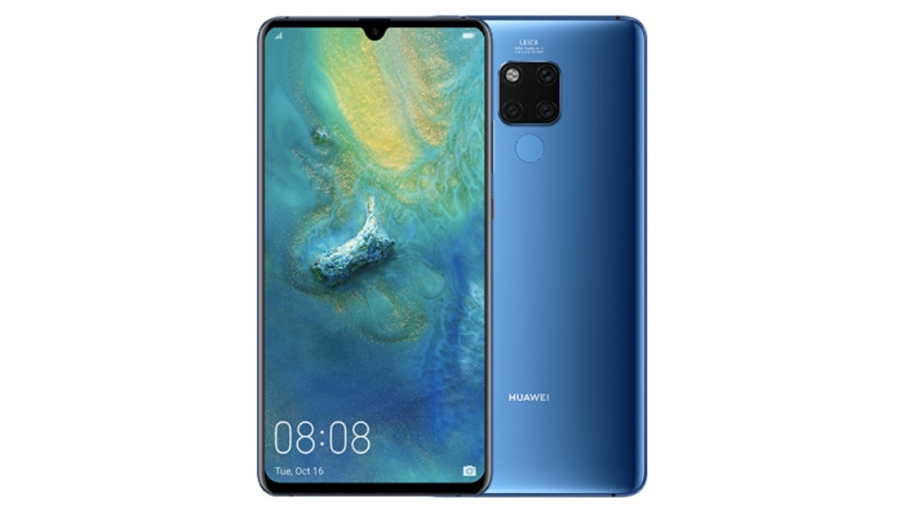
The Huawei Mate 20 X has a graphene layer in its ‘super cool system’. Image credit: Huawei
The nascent graphene industry has long wondered why big tech firms haven't regularly commercialized its ‘wonder material’, so the inclusion of it in the Huawei Mate 20 X is pretty big news.
However, details of how graphene is used in this 7.2-inch phone's ‘super cool system’ are scant.
All we know is that a film of graphene (which is brilliant at dissipating heat thanks to its structure) is used in conjunction with a vapor chamber to keep the Mate 20 X cool even while the CPU and GPU are being pushed to their limit.
That’s something that could happen a lot, since its massive screen, 7nm Kirin 980 chipset, 6GB of RAM and 5,000mAh battery make the Huawei Mate 20 X a phone that’s likely to be used for intensive gaming.
Graphene nano-electronics
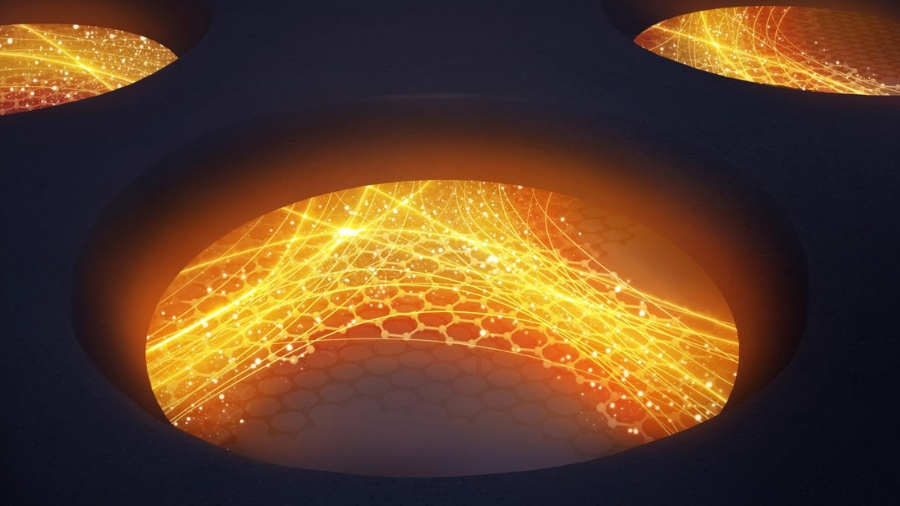
A team of researchers from Denmark is researching graphene nanoelectronics. Image credit: Carl Otto Moesgaard
Ultra-thin and 2D, graphene conducts electrical current like nothing else, which in theory should mean much faster and more energy-efficient forms of electronics. What has been holding it back is the band-gap problem; how to engineer a graphene transistor that reliably switches on and off.
Researchers at DTU Physics in Denmark have come up with a new nanolithography-powered 'sandwich' technique that gets graphene to nanoscale dimensions without ruining its electrical properties.
“The fact that we can tailor electronic properties of graphene is a big step towards creating new electronics with extremely small dimensions,” says researcher Peter Bøggild.
Graphene 'fitness patch'

This fitness patch measures heart rate, hydration and breathing rate. Image credit: ICFO
Since it is flexible and extremely sensitive to changes in heat and light, graphene has a big future in wearable devices. This 'transdermal fitness patch' from the ICFO in Barcelona does everything your Fitbit can do, and more, but in the form of a stick-on patch.
It measures heart rate, hydration and breathing rate with improved accuracy and less power consumption than current fitness bands, and conforms to any surface.
This is sadly still just a prototype right now, but the ICFO believes that it could easily connect to your smartphone and give you alerts when you're a little bit dehydrated… because we're so busy looking at our phones that we've forgotten to note when we're thirsty.
Graphene contactless cards
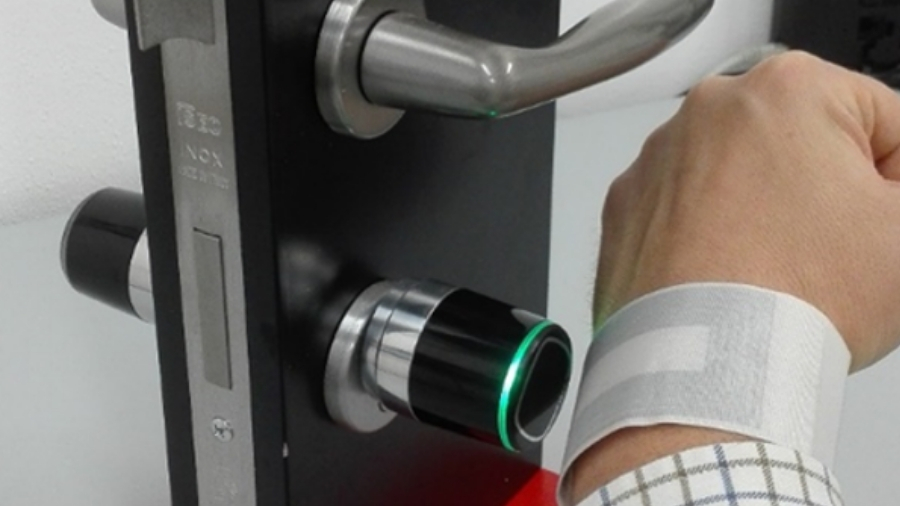
Graphene NFC antennas could make plastic cards history. Image credit: CNR
Single-use plastic is not the future, but in the present it's everywhere. Hotel key cards (and contactless bank cards) are presently made of plastic with an NFC antenna inside that uses rare metals.
However, if you make that NFC antenna out of graphene – a material which is nothing more than carbon, which is plentiful on planet Earth – and print it on recycled paper using graphene ink, that means a lot less waste.
As well as electronic keys aimed at hotels that are being shown-off by Italy's CNR, the same tech could also mean sustainably produced boarding passes, concert wristbands, train tickets and much more… with NFC embedded inside as a bonus.
Graphene cement
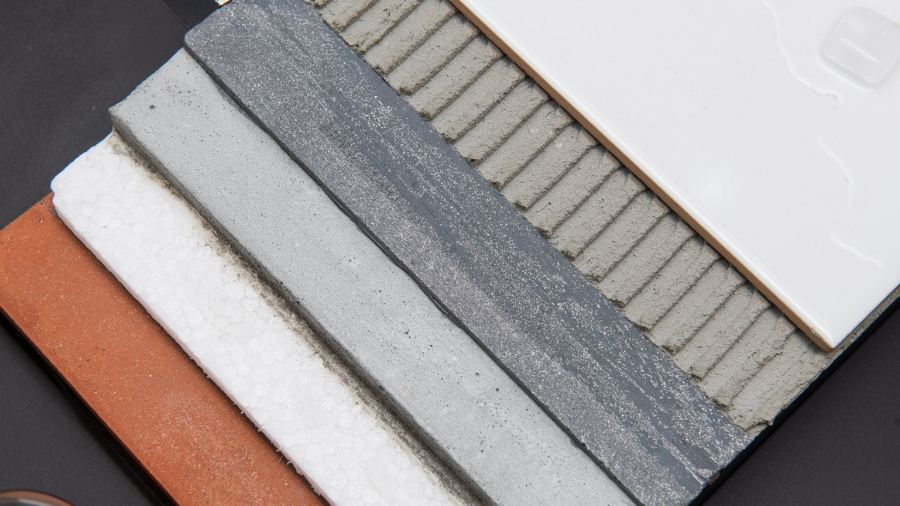
Graphene cement means no need for electricity cables. Image credit: Italcementi
How about a house without (expensive) copper and wires? One of the most popular displays at Mobile World Congress 2019's Graphene Pavilion was Italcementi's 'conductive cement'.
The graphene inside makes it conductive, so there's no need for electricity cables to be tunneled into the walls. But there's another, hidden, use: cooling.
In hot countries, a wall that easily dissipates heat will automatically make the house cooler without the need for expensive air-con. Graphene-infused cement could also mean integrated conductive strips of graphene around the home for lighting and in-floor heating.
MediaDevil Artisanphonics CB-01 Nanene earphones
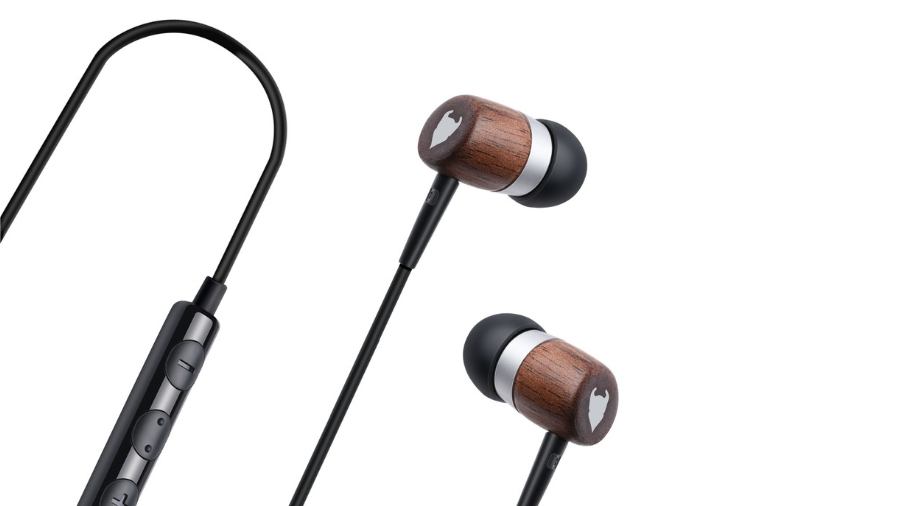
Graphene gives you better bass. Image credit: MediaDevil / Versarien
If you want an earful of graphene, you can get that right now for a low price. On sale from London-based MediaDevil are the Nanene 'enhanced audio' earphones, which are built by Versarien.
The diaphragm membrane in each earphone is made with graphene, so it's much thinner yet has the same strength and durability as a regular membrane.
However, because it's flexible it can be controlled better, allowing for enhanced treble and bass. They're iOS and Android-compatible.
Graphene board games
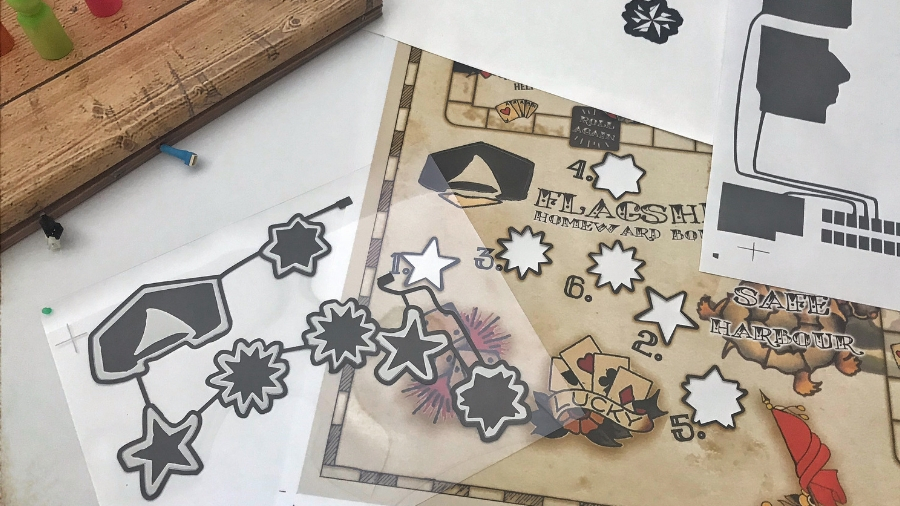
Graphene makes any surface touch-sensitive and able to light-up. Image credit: Novalia / University of Cambridge
How about a game of Monopoly… with lights? Using electroluminescent inks that makes light thanks to graphene, Novalia and the University of Cambridge have come up with a demonstration board game called 'Homeward Bound' that has integrated touchpanels, dice that light up, and 'chance' cards that are multilingual.
It's not going on sale, but it highlights the fact graphene inks can be printed on cardboard, wood, paper (or anything) to create smart surfaces.
Graphene gas detectors and 'air sniffers'
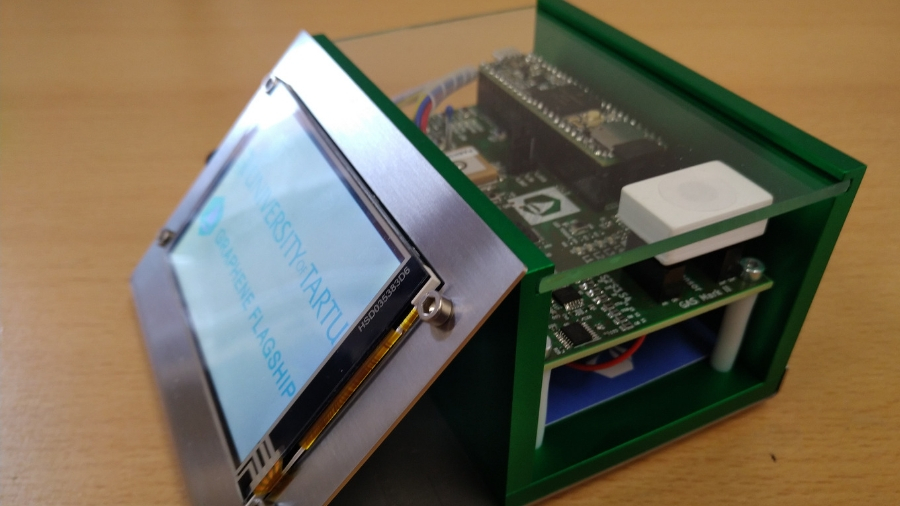
Electroluminescent inks can sense moisture and gases. Image credit: ICN2
Graphene-based electroluminescent inks have been shown by the ICN2 (the Catalan Institute of Nanoscience and Nanotechnology) to work as gas detectors.
The ICN2’s prototype is a screen-printed electroluminescent display that can sense everything from humidity levels to toxic gases such as carbon monoxide, carbon dioxide or nitric oxide.
When the graphene sensor inside responds to changes in the air composition, it becomes conductive, and a light comes on that varies in intensity according to how much gas is detected.
The University of Tartu in Estonia has also created the Graphene Air Sniffer (GAS), which has graphene-based miniature sensors that can detect very low levels of pollutants in the air.
Graphene 'supercaps' for phones

Supercaps can charge and discharge at a very high speed. Image credit: Thales/M-SOLV
Since graphene conducts electricity so perfectly, it can be used to create ultrafast charging batteries that can handle currents at rates that are dozens of times higher than lithium batteries.
Supercapacitors or 'supercaps' are storage devices that can charge and discharge at a very high speed, and the addition of graphene has been worked on for five years by aerospace giant Thales and M-SOLV.
A new spray coating technique has allowed researchers to increase the power of supercapacitors by five times. Expect products to be launched in late 2019.
Graphene intelligent clothes

Expect more and more graphene-powered e-textiles. Image credit: VTT
Think the wearables era means Fitbits and the Apple Watch 4? If those bulky devices are the first wave of wearables, perhaps the second will be 'smart wear' powered by graphene.
Since graphene inks can be printed onto flexible surfaces, such as plastic sheets, paper and fabrics, it's possible to make graphene-based, electrically conductive clothes such as this Touch Interface T-Shirt from the VTT Technical Research Center of Finland.
Working as capacitive touch-sensitive electrodes, the printed graphene circuit is inside the t-shirt and the buttons are on the outside. Paired with a phone or TV over Bluetooth, it means you could answer your phone by tapping your clothes.
It could also enable soldiers, firefighters, skiers and other sportspeople to answer their phone on the go, as well as making it easier for elderly people who need to contact the emergency services.
UV-tracking graphene patch

This graphene patch measures UV light on skin. Image credit: Jamie Carter
UV-protective clothing that lets through a fraction of the sun's harmful rays to your skin is now common, but what if your clothes could actually tell you when your skin has had enough UV radiation? That's the idea behind this ultra-thin and flexible sensor.
"You stick it directly on your skin, or to your swimming shorts, or it could be integrated into clothes," says Professor Frank Koppens from ICFO (The Institute of Photonic Sciences), Barcelona. "It measures the UV index and sends an alarm to your phone when you need to get out of the sun." Currently in the process of being miniaturized, in the future this patch will be even smaller, and be completely transparent.
Smart insole monitoring for athletes
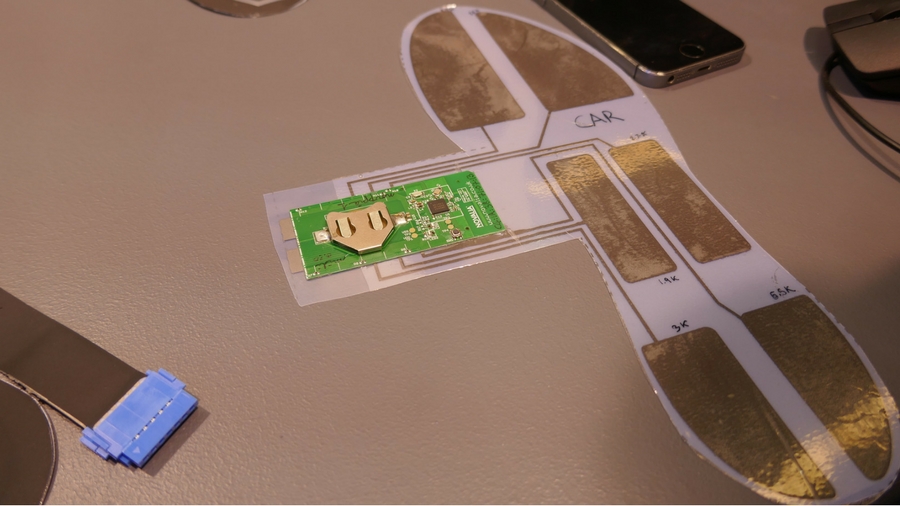
Graphene foam in an insole responds to variations in pressure. Image credit: Jamie Carter
Graphene is also making great strides in smart footwear. Real-time pressure-sensing socks and insoles aren't new, but mostly such products have just a few pressure sensors built into them. This prototype has well over 100. Able to measure exactly where your feet is striking the sole, lightweight graphene-embedded foam responds to variations in pressure – and at exacting milligram level.
"I can get a qualitative number on how much every point of my foot is exerting on the sole, and present mapping of shoe pressure, all within a smartphone app," says Yarjan Abdul Samad from the Cambridge Graphene Center at the University of Cambridge.
Cool graphene shoes
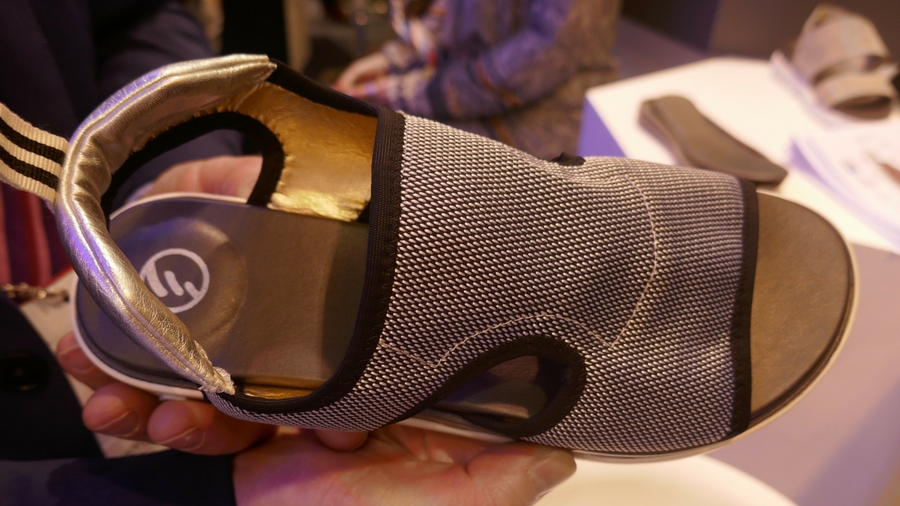
Graphene shoes banish hot, smelly feet. Image credit: Jamie Carter
Graphene boasts excellent heat conductivity, so where better to put it than in a hot, stinky place? In this prototype of a graphene shoe developed by the Istituto Italiano di Tecnologia, BeDimensional and Tuscan shoemaker Fadel, graphene flakes are added to polyurethane. The end result is a shoe that dissipates 50% more heat than when the shoe is made just with polyurethane.
This is a great way to understand the value of graphene in the manufacturing process; it's usually an addition to, rather than a replacement for, existing materials. Even more astounding is that these graphene shoes are just 1% graphene.
The world's most efficient solar cell
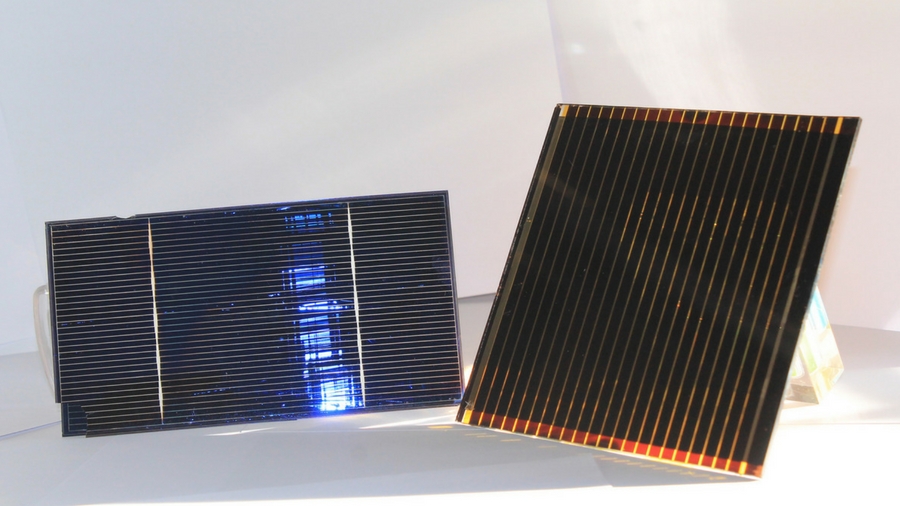
Graphene has been used to make the most efficient solar cell yet. Image credit: Graphene Flagship
Could graphene help us capture solar energy more efficiently? The early signs are good, with the Istituto Italiano di Tecnologia using graphene to create large solar cells from perovskite (inorganic crystals).
“The graphene is used to increase the efficiency, and to increase the stability of the solar cell,” said Beatriz Martín-García from the IIT, who told TechRadar that although it doesn't last as long as a solar cell made from silicon, the graphene-infused version is already four times cheaper to manufacture. That's just as important a factor in graphene's potential impact as its 'magical' qualities.
Graphene brain-computer interfaces
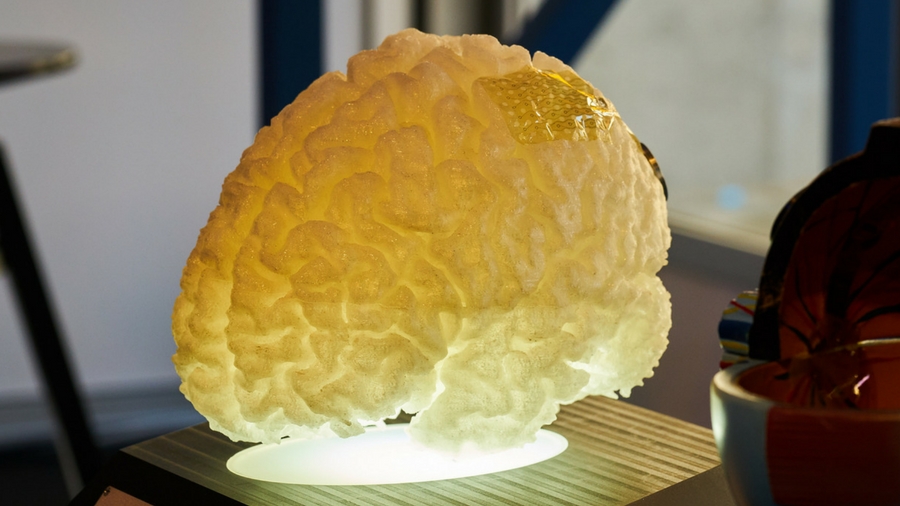
Flexible graphene circuits can be laid over the human brain. Image credit: Valdek Laur (EU2017EE) / Graphene Flagship
Graphene's flexibility means it can be used in brain implants that record and stimulate brain signals on the surface of the brain. "Graphene is enabling a new generation of less-invasive neural implants," says Professor Dr. Jose A Garrido, ICREA Research Professor at ICN2.
"It can be easily integrated into flexible substrates, it has a very high signal-to-noise ratio so retains a very high quality electrical signal, and it also minimizes the use of cables."
Garrido's work at the ICN2 Speech Centre Stimulation and BrainCom is focusing on providing a communication path to patients with severe speech disabilities (such as strokes and motor neuron disease) by mapping the region of the brain correlated to pronouncing speech.
Graphene cryo-cooler compressor for 5G

Graphene layers enable this compact base station for 5G. Image credit: Jamie Carter
Mobile antennas and receivers need more and more cooling the higher the data throughput, or else they overheat. So the massive increase in data throughput required in 5G base stations is something of a conundrum for the telecoms industry. Cue this miniaturized cooling pump to take electronic systems down to cryogenic temperatures.
"We have developed a small compressor based on graphene that's about a tenth of the size of what can be done with other materials," explains Lars Lundgren at APR Technologies AB, Sweden. With no moving parts and with graphene in every other layer, it generates the pressure needed to cool down base stations to about to -150 degrees Celsius, the 5G signal stays stable. Ericsson and Nokia are involved.
Graphene infection-detectors
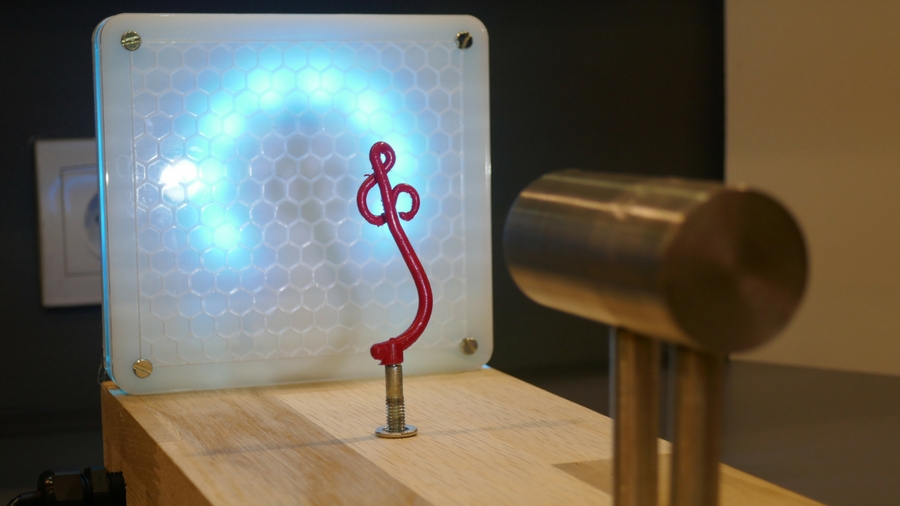
Graphene is being used to analyze blood samples in 10 minutes. Image credit: Jamie Carter
First reported in March 2014, the Ebola epidemic in West Africa killed over 11,000 people in Liberia, Guinea, Sierra Leone, Nigeria, Mali and the US. So how do we stop the next one? Graphene photodetectors, that's how.
The problem during an outbreak is that blood tests take days, and people in places like airports and city centers need to be tested immediately. Created by the KTH Royal Institute of Technology in Sweden to work with a tiny drop of blood, this sensing platform is based on silicon photonics and graphene photodetectors that find specific molecular pairs in the infrared spectrum. It essentially identifies the molecular fingerprint of a specific disease.
That's something that can already be done in labs, but graphene makes it mobile, and really low-cost because it uses the same silicon chip production processes already used for smartphone chips. The detector attaches to a smartphone and confirms whether someone has a disease within 10 minutes.
Graphene earphones

Xiaomi’s Mi Pro HD earphones contain graphene. Image credit: Xiaomi
Although graphene was discovered at the University of Manchester, research into its potential uses has gone global, with science labs in China filing more patents than any other country. So it's perhaps no surprise that one of China's leading consumer electronic brands is among the first to embrace graphene in its products. Xiaomi's Mi Pro HD earphones are just its latest product to feature graphene, though it's unclear of its exact role.
All Xiaomi will say is that it contains a '25-step process' graphene dual-diaphragm 'to retain the rich details and to keep the low notes mellow'. The graphene diaphragm is 'more ductile under high frequencies, producing sounds that are rich, sharp, and crystal clear' and 'conducts 100% of the electrical signals passed through them'. Xiaomi also sells the A10 Ultra-thin PMA Graphene Smart Therapy Belt, which uses graphene-infused fabric.
Graphene planes

In aviation, weight is everything, and that means huge fuel costs. Most passenger airlines carry enough fuel not only to support the weight of the aircraft and passengers, but also the weight of the fuel itself. So it's no surprise that people like Sir Richard Branson think that all aircraft will be constructed from super-light graphene within a decade.
Much lighter and much stronger than the carbon fibre composites presently used, graphene has been attracting the attentions of Airbus, which is a member of the Graphene Flagship research group, and held a symposium on graphene innovations last year.
Graphene phone cases
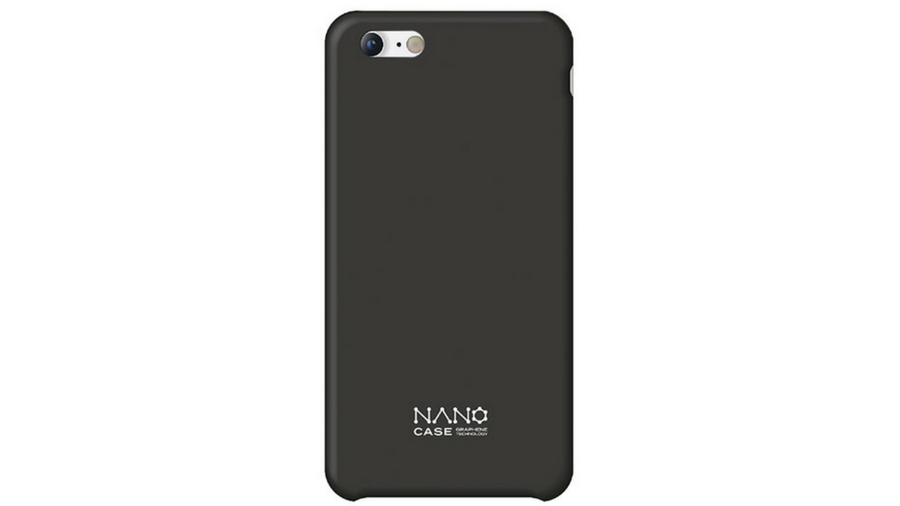
NanoCase uses graphene to dissipate heat. Image credit: NanoCase
Smartphone cases with built-in batteries for that extra top up just haven't caught on, but the problem of quickly draining phone batteries persists, particularly for power-users. Cue NanoCase for the iPhone X, the iPhone 8/8 Plus, and the iPhone 7/7 Plus, which contains a graphene panel that dissipate excess heat inside the phone quickly.
Doing so extends the battery life of a phone by up to 20%, claim NanoCase's makers. However, it's only going to help you if you're the kind phone user who intensively uses their phone so much that it gets hot. Gamers, take note.
Super-thin graphene Kindles
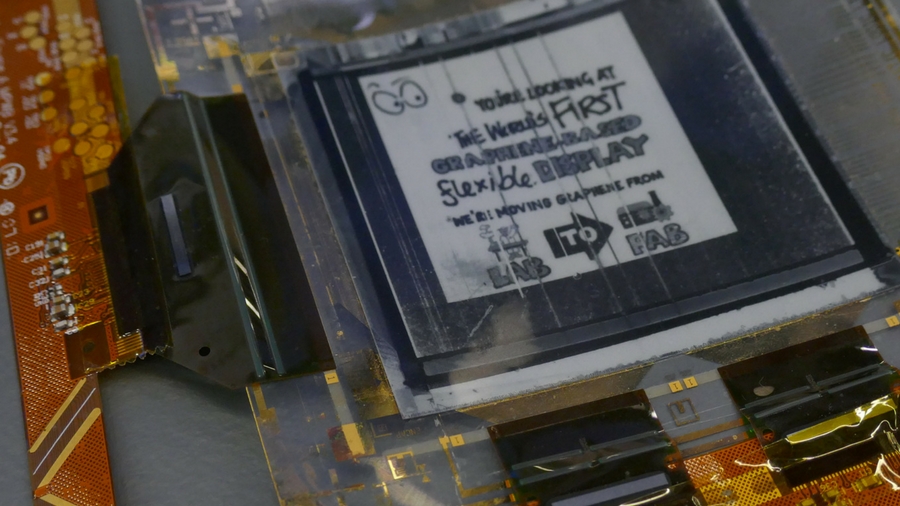
Image credit: Jamie Carter
At MWC 2017, FlexEnable showed-off a full color, graphene-based mechanical pixel system for low-power displays and e-ink displays – that’s a paper-thin Kindle-like device to you and me.
The big breakthrough for the e-ink screen is using printed graphene instead of brittle titanium oxide. “We try to replace some of the metal conductors with printed graphene to make the devices more flexible,” says Dr. Rouzet Agaiby at FlexEnable, whose plastic electronics still tend to include some (non-flexible) silicon. “A Kindle is only thick because it’s on glass.”
Graphene cars

Image credit: Jamie Carter
It’s all very well having an electric car, but only if it accelerates as quickly as its petrol counterparts. That means they need to be super-light. So how about we replace glass and metal with plastics, carbon fiber… or graphene?
Cue a limited-edition supercar starting at £130,000 (around $163,000/AU$215,000) from British manufacturer Briggs Motor Company, whose structural components include graphene, so are lighter and stronger than carbon fiber composite, and therefore much more energy-efficient.
Another way of using graphene to increase acceleration is super-capacitors containing graphene for energy recovery; its super-conductive properties create a super-efficient KERS (Kinetic Energy Recovery System). Skeleton Technologies has shown exactly that using curved graphene, which saves on fuel consumption (or reduces electricity use).
Wearable tickets
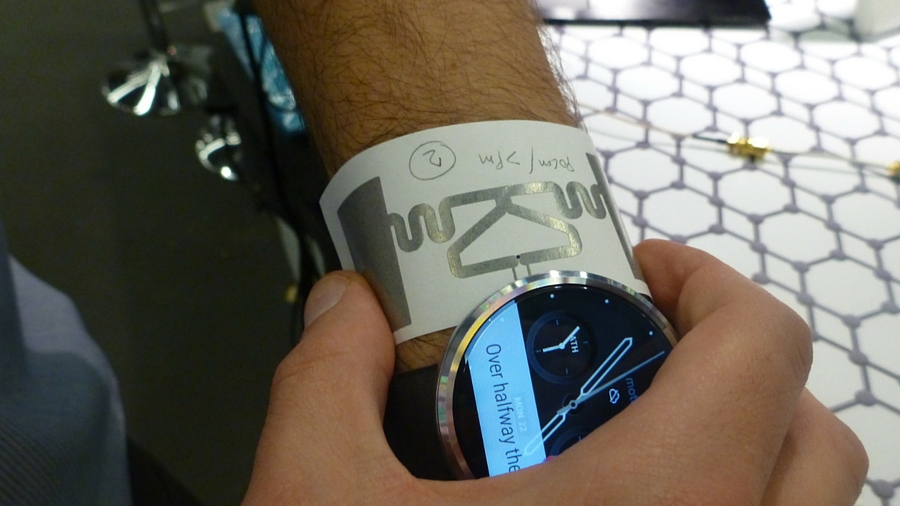
Image credit: Jamie Carter
Printed electronics are the next big thing, and graphene is at the forefront. Costing just a few pennies each are paper wristbands or tickets, which have graphene ink printed onto them. In a recent demo, the proximity of a graphene RFID tag to a reader caused a picture to be taken of the wearer or holder.
"This could be used in closed environments such as airports for monitoring passengers boarding a high security flight, or on the London Underground to track which entrances and exits passengers take just by tracking their ticket," says Dr Thanasis Georgiou, VP, Graphene Security Ltd., Photon Science Institute, University of Manchester.
"Products in supermarkets could have [graphene-based] RFID technology on them so you could know in real-time where products are."
As well as making shop-lifting much harder, and perhaps even getting rid of the checkout altogether, a connected Internet of Things-like system would be able to see instantly when stocks of specific products are running low.
Robotic graphene hands

Image credit: Jamie Carter
How about a totally wearable prosthetic hand like Luke Skywalker wears in The Empire Strikes Back? Graphene inks have been used by the Istituto Italiano di Tecnologia (IIT) to make the Prosthetic IIT-NAIL Hand, which uses graphene ink on paper as the electrodes, replacing titanium.
Doing so gets rid not only of titanium and all cables taking biomedical electrical signals from muscles to the hand, but it means the control system can have direct contact with the stump. The Prosthetic IIT-NAIL Hand is flexible, more comfortable and cheaper to make than existing techniques.
Graphene to cure blindness
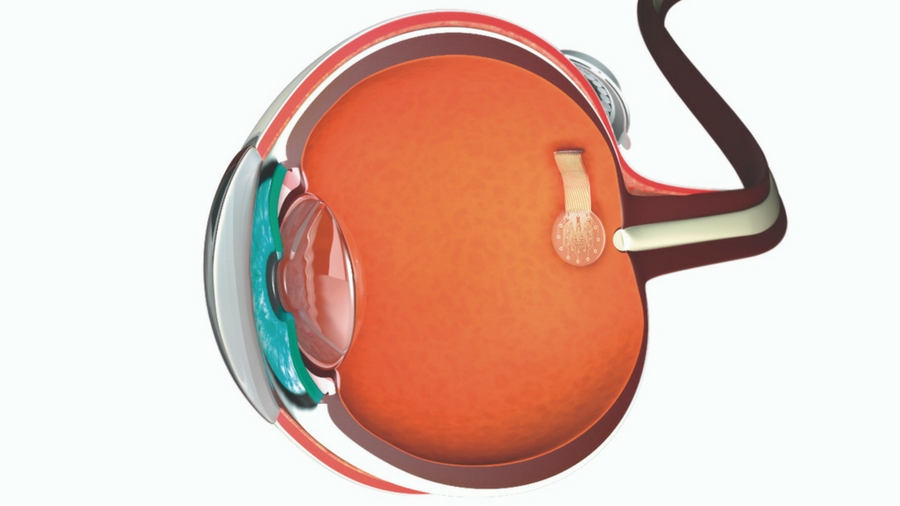
Image credit: ICN2
It conducts, it’s flexible, and it’s safe when used against flesh. Cue a graphene contact lens – officially an ‘electronic retinal prostheses’ – that helps patients that have lost their sight but still have a functional optic nerve.
The brainchild of Jose Antonio Garrido, director of the Group of Advanced Electronic Materials and Devices at ICN2, graphene is used to effectively detect and translate more light into electrical signals, increasing the resolution of images perceived by the patient's brain. It’s still under development.
A battery that charges in minutes

What if you could charge your phone in five minutes? That’s the thinking behind the Zap & Go charger, which takes full advantage of graphene’s conductive prowess to fully charge in five minutes, though the prototype is only a 750mAh battery. It's due to launch later in 2017.
Meanwhile, the Watt Laboratory (under Huawei's Central Research Institute) also recently used graphene to allow lithium ion batteries to run at temperatures of 60°C, roughly 10°C hotter than standard batteries, thereby prolonging the lifespan of the power pack. It also held a charge for twice as long.
Graphene e-tattoos and fitness trackers
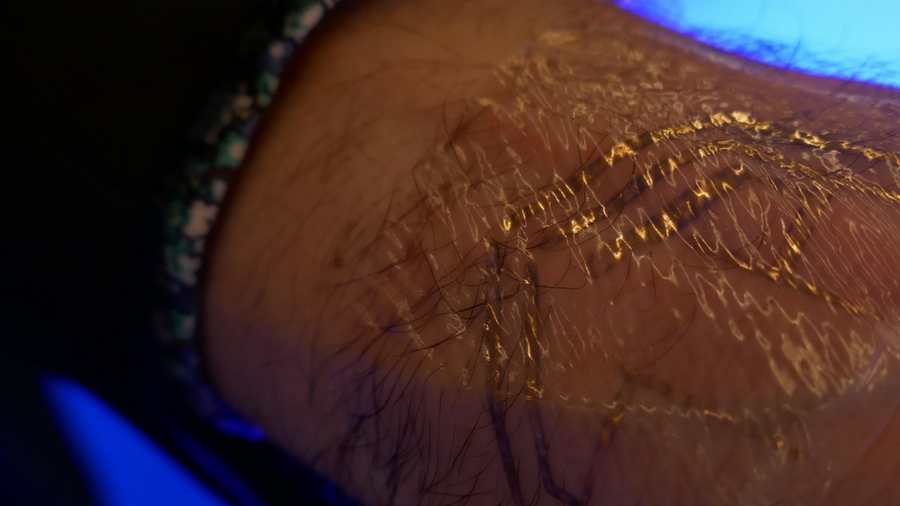
Image credit: Jamie Carter
Soon, Fitbit, Jawbone, Misfit and other fitness 'wristables' are going to look clunky – and dumb. Graphene promises not only much thinner (even paper-thin) wristbands, but they'll have integrated graphene light sensors and circuitry that bring extra functionality just by using light.
Wearables that measure your activity and heart rate are everywhere, but they’re bulky, and their one-trick function is becoming boring. Cue graphene-enabled health patches for patients in hospitals, for sports, and for everyone else.
“Wellness sensing in the future will be something like a disposable e-tattoo, which has graphene that senses vital signs like heart rate, oxygen saturation, and skin temperature, breathing rate and even UV light exposure when you’re at the beach,” says Stijn Goossens, Postdoctoral research engineer, Nano-optoelectronics, Institute of Photonic Sciences (ICFO) in Barcelona.
“With oxygen saturation alone you can predict if someone is getting the flu,” he says, adding that even the digital circuits are one-atom thin, including a Bluetooth chip.
Enabled by a flexible and transparent graphene-based sensing platform, the key advantage is that a power-hungry LCD screen isn’t needed. And that means it can be super-thin.
Graphene pixels for wearables

Image credit: TU Delft/Graphenea
Who needs silicon? Researchers from TU Delft and Spain's Graphenea have found a new way to create mechanical pixels using tiny balloon-like structures. Each pixel is a two-atom thick graphene membrane 13 micrometers wide, and although they don't emit light, they are visible in sunlight so could suit e-books and smartwatches.
Oh, and they're full color; thanks to interference between light waves reflected from the bottom of the cavity and the membrane on top, which can be controlled using pressure. The researchers are now working to control the color of the membranes electrically.
Graphene for scanning your Shiraz
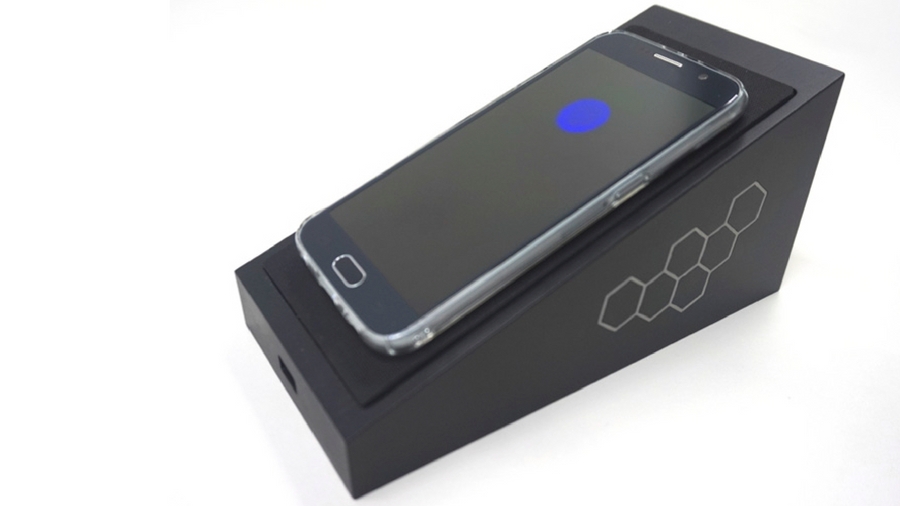
Image credit: ICN2
It’s very easy to get drunk on the possibilities of graphene, and it doesn’t get easier than with the ICN2’s graphene quantum dots printed on paper that can detect certain contaminants.
It means the ICN2’s patented sensor, when placed in a phone, exploits the optical properties of graphene quantum dots to detect the presence of pesticides in wine, water, or anything else.
“Light comes from the graphene quantum dots, interacts with the compounds, and you see changes in the light’s color,” says Professor Dr. Arben Merkoçi, director of the Nanobioelectronics and Biosensors Group at the ICN2. “All it uses is paper, a smartphone, and graphene.” It could have uses in hospitals, or anywhere you don’t believe the booze.
Graphene scanners for smartphones

Image credit: Jamie Carter
Graphene can also be used to make super-thin, super-sensitive image sensors that can detect invisible infra-red light. Cue spectral applications to differentiate between different organic materials, with a quick photo revealing exactly how ripe fruit is, or whether baby milk is toxin-free; all from a smartphone.
“Our prototype is built on graphene and CMOS integration that can sense both visible and infra-red light,” says Goossens at the ICFO. “In the near future we can produce them in very high quantity at very low cost for smartphones.”
Graphene sensors for 3D cameras
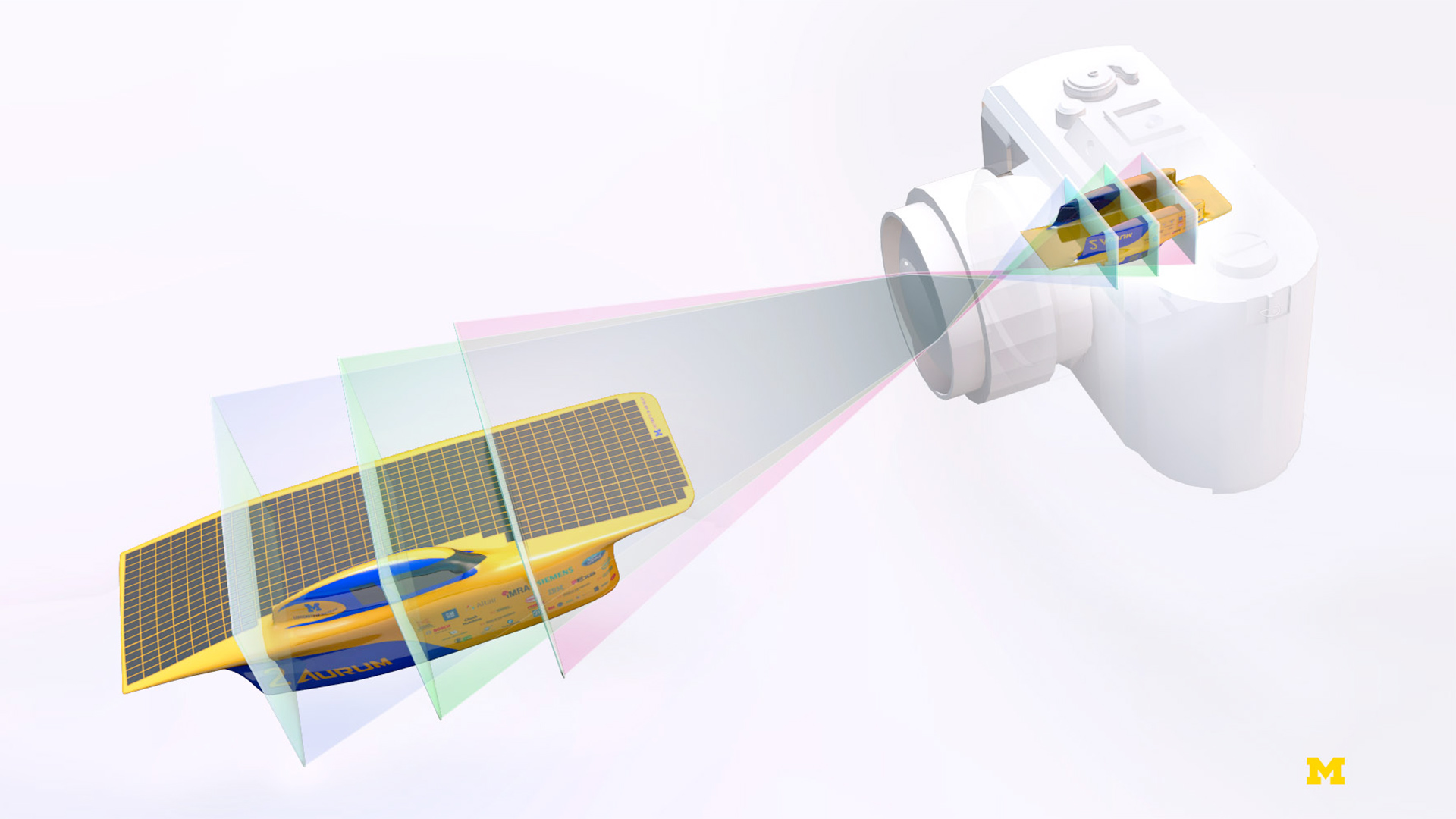
Image credit: Stephen Alvery, Michigan Engineering
If you've read up on graphene, you may have heard optimistic reports of a graphene camera that's 1000x more sensitive to light than the ones we have today, conjuring visions of pixel-perfect night shots. While you won't want to get your hopes up for that just yet, a more recent project from the University of Michigan deserves a closer look.
It's a DSLR-size camera that uses multiple translucent graphene sensors to create a 3D map of a scene, so that you can pick your focus point after taking a shot. This is a graphene alternative to the 'light field' Lytro Illum, but where the graphene camera uses multiple sensor layers, the Illum needs an array of hundreds of thousands of micro lenses to create its images.
"Graphene detectors can offer very high sensitivity, so you don't really sacrifice the clarity by making them transparent," says associate professor of electrical engineering and computer science Zhaohui Zhong. The tech could be slimmed down to fit into a phone.
Night vision for self-driving cars

Image credit: ICFO
The ability to see in the infrared – effectively night vision – means that same graphene CMOS camera can be used as part of a self-driving car’s automatic brake system, specifically in bad weather.
“Now they use visible cameras, but in dense fog they’re useless,” says Goossens of this collision avoidance tech. Autonomous cars will also probably use LIDAR sensors to constantly scan the area around them, but it’s a relatively slow technology.
At Mobile World Congress 2017 in Barcelona, the ICFO had a Scalextric-style track with two VW camper vans buzzing around, with the following vehicle stopping in its tracks as soon as the front vehicle braked in a ‘fog box’.
More useful windows
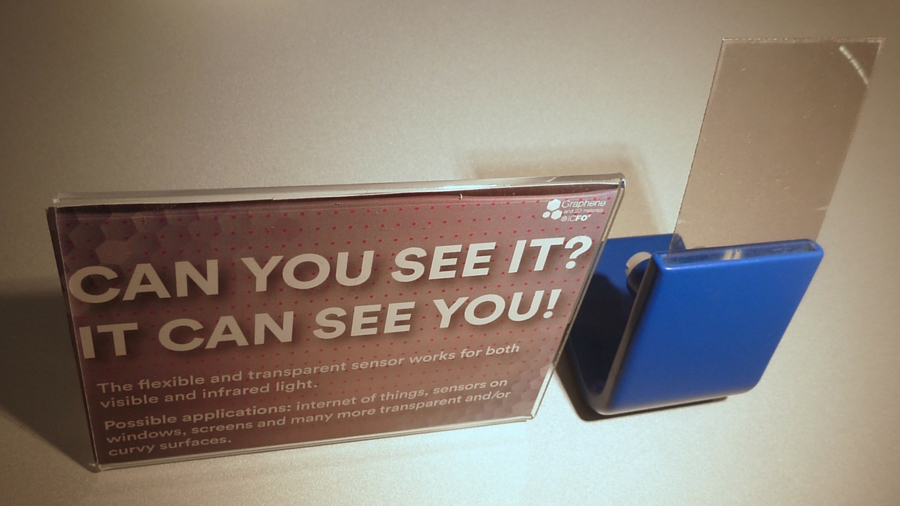
Image credit: Jamie Carter
Graphene's transparent appearance and super low-power means it can be used in some unexpected places. Since it's got super-low power consumption and it's highly sensitive, the tech could be used in inert materials such as windows.
"The light sensors can be embedded in anything, so you could think about putting it in windows or other places where there's no power, such as packaging," says Goossens.
"In a window in a building it could detect whether it's night or day for your curtains to open or close automatically." It's also the first step along the way to windows managing to harvest energy during the day and illuminating during the night – while still being transparent.
However, a more short-term killer app is probably as a hands-free system in a car. "You would need four sensors to detect a directionality, so in a car window it could detect motion sensing – you could change the track on a CD just by waving your hand," says Goossens.
The advantage over existing tech is that graphene can be completely transparent – the entire window could be full of sensors.
3D-printed graphene drones
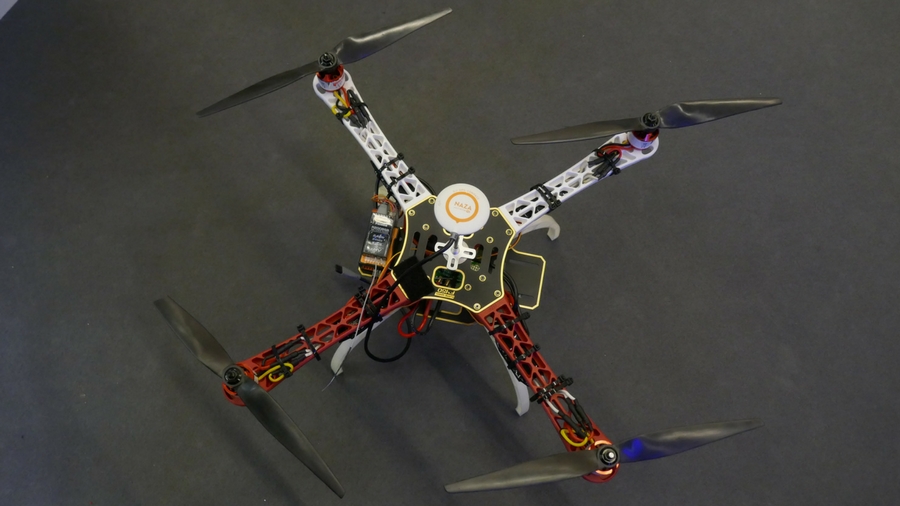
Image credit: Jamie Carter
Drones run out of battery quickly, and their propellers break when they’re landed badly. Cue a drone with 3D-printed graphene composites in its propellers that’s both super-strong and super-light, so more battery-efficient.
“Printing with graphene is very easy, but when you start combining it with other polymers and materials, that’s when it gets complicated,” says Charlotte Powell at the University of Manchester’s National Graphene Institute.
Nevertheless, the goal of this project with the University of Central Lancashire is to make all parts of the drone with graphene, including more graphene composites in the body and even a graphene-based battery pack and graphene spectral sensors.
Graphene motorcycle helmet
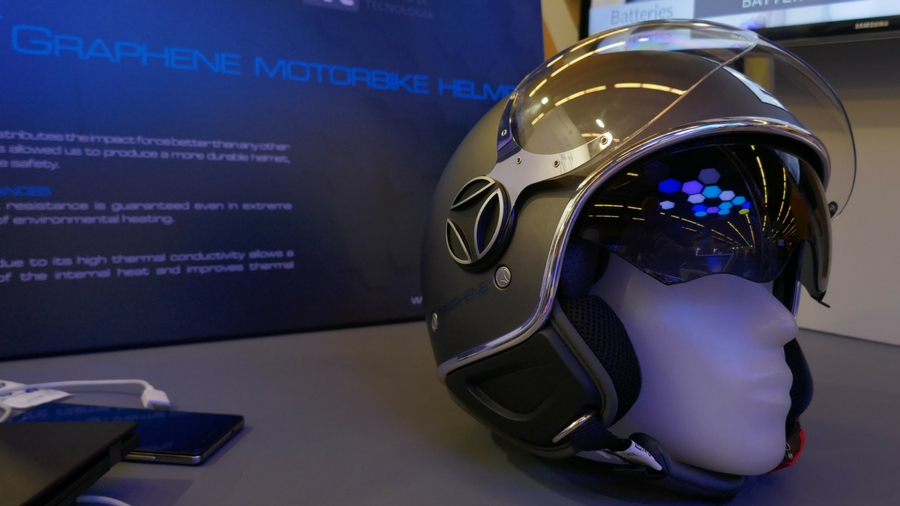
Image credit: Jamie Carter
They’re hard, they’re hot, and they’re heavy, but helmets have already had the graphene treatment.
Developed by Italy’s Momodesign and the Istituto Italiano di Tecnologia (IIT), this first-ever graphene-infused carbon fiber helmet capitalizes on the material’s thin, strong and conductive, flexible and light characteristics to create a helmet that absorbs and dissipates impact better than your average helmet. It also disperses heat more efficiently, so it’s cooler.
Flexible graphene Wi-Fi receivers
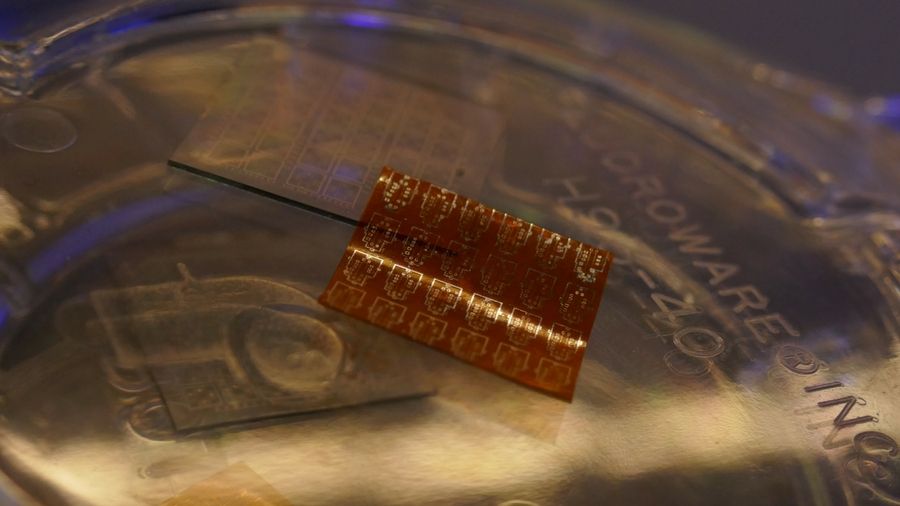
Image credit: Jamie Carter
Hardware is dead; the future of phones is flex-ware – and that means graphene making everything curved, bendable and flexible. Oh, and the data super-fast, too.
The first Wi-Fi receiver based on graphene, from AMO together with RWTH Aachen University, has 24 Wi-Fi receivers on pieces of plastic and glass, but its makers claim it can work on fabric, paper, glass or plastic, and deal in Bluetooth, 4G and even 5G.
Prototypes are working at 2.45Ghz and 5.8Ghz and the creators have circuits that work at up to 90Ghz, which covers the 5G standard.
This is printed electronics, which graphene is very much at the forefront of; expect to see RFID tags printed on paper using graphene ink that act as a ticket for concerts and at airports, and even as a method of payment at events and on transport networks.
Making water safe

Image credit: Directa Plus
Water, soil and air purification is also possible with graphene. One of these products – Grafysorber from Directa Plus – is super-absorbent, and ideal for oil spills. “One gram of Grafysorber is able to absorb up to 90 grams of oil,” says Laura Rizzi, R&D manager at Directa Plus.
The mobile Grafysorber Decontamination Unit contains a plasma machine to produce the wonder material on-site, which is even able to return contaminated water to safe levels for drinking.
“Normally you have to use a biological or chemical process to treat contaminated water, but Grafysorber is completely chemical-free,” says Rizzi.
It’s also been suggested that the same properties could be used as water membranes that could sieve pure water straight from a contaminated, muddy puddle.
Graphene gloves
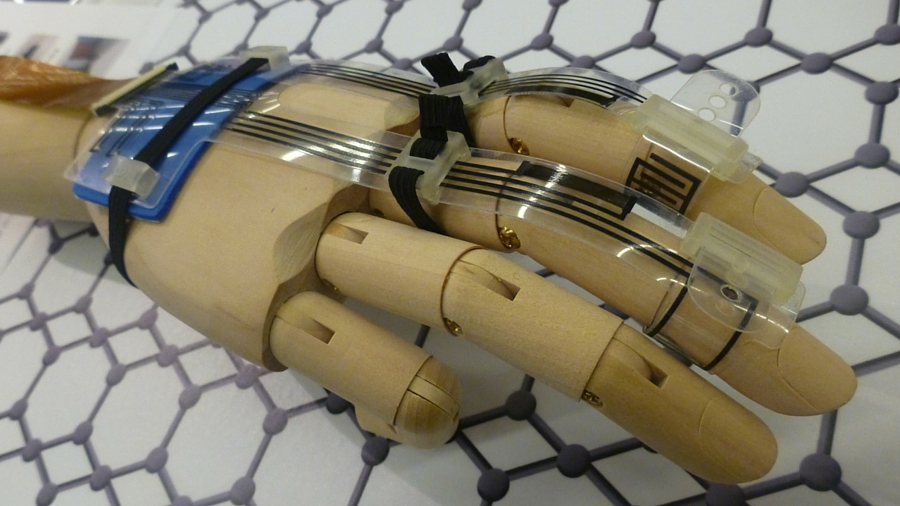
Image credit: Jamie Carter
It’s not often said, but virtual reality is not very convincing. It needs movement sensors to become so, and what better than a pair of super-responsive gloves that are sensitive to tiny changes in motion and temperature?
“Graphene flakes printed in very thin layers are very sensitive to strain,” says Dr Darryl Cotton, Senior Researcher, Nanotechnology, Nokia Research Center in Cambridge.
“We’ve also put reduced graphene oxide into a temperature sensor.” The end result is a glove that, for now, sets-off surface-mounted LEDs, but they’re so thin and flexible that they could be used to make virtual reality environments responsive to tiny movements in fingers.
Graphene miniature speakers
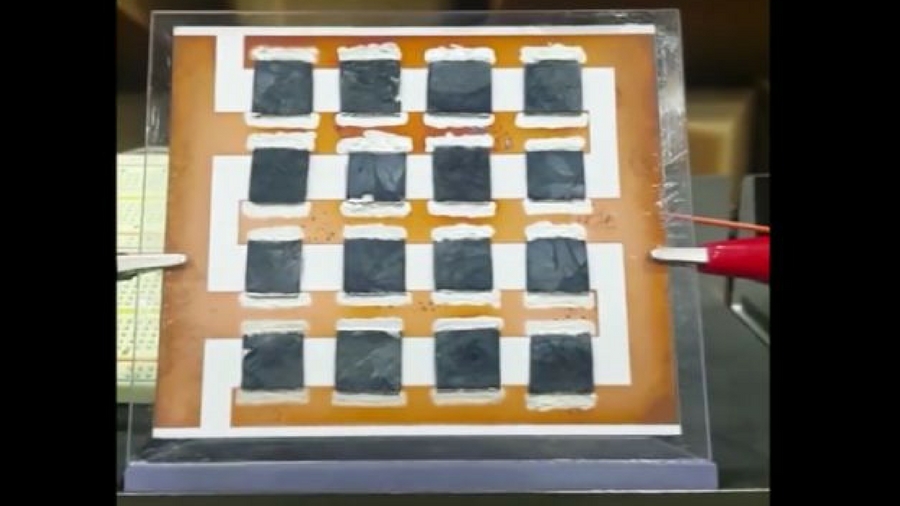
Image credit: KAIST College of Engineering
Regular audio speakers are very physical things. They use drivers that move back and forwards very quickly, exciting the air to create sound waves. Back in 2013, the University of California at Berkeley made an earphone with a graphene driver, but the material has also been used to create a completely different kind of speaker.
A recent article in the ACS Applied Materials & Interfaces journal outlines a thermo-acoustic speaker made using graphene. It's lab-bound right now, but it could be a fit for mobile devices, as it doesn't require the kind of speaker cavity normal dynamic driver speakers need.
The way in which it works may sound odd though. A suspension of graphene flakes is freeze-dried to produce an aerogel – an ultra-porous graphene-based structure, a bit like a rigid sponge. This gel is then rapidly heated and cooled to cause air movement similar to that of a normal speaker cone.
We're yet to see how much battery drain a thermo-acoustic speaker would cause, and how much discernible heat it might produce – but if it makes a tablet sound more like a mini surround sound system, we're in.
Graphene bikes
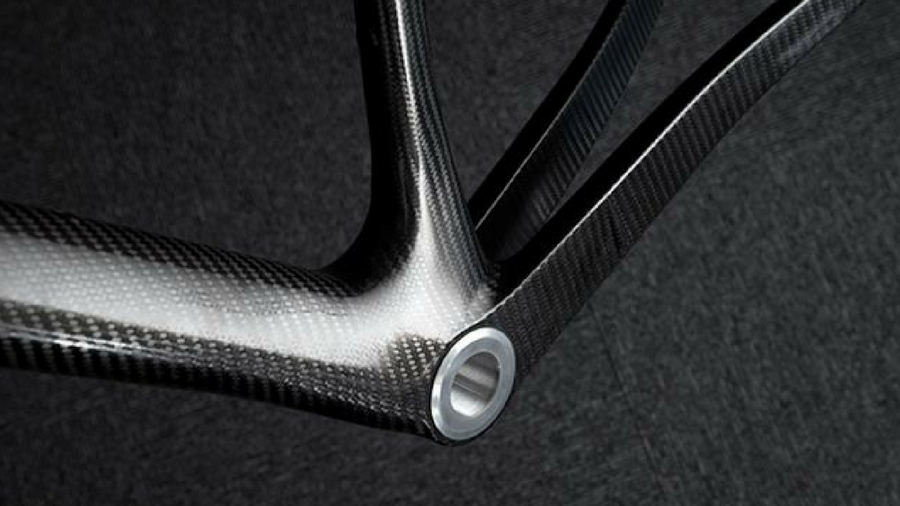
Image credit: Dassi
In July 2016, Dassi unveiled the first graphene bike frame. As graphene's strength relative to its weight is so high, graphene should make ultra-rigid, extremely light bike frames a cinch to design.
The Dassi frame is still predominantly a carbon fiber frame, with some layers of graphene reinforcement at its core, but graphene itself makes up only around one percent of the frame.
At this stage it's a proof of concept, particularly as the frame is around the same weight as a top-end all-carbon one, at 750g. However, Dassi claims the weight will eventually be reduced to "500g unpainted".
Graphene can also be woven into carbon fiber; Rice University successfully reinforced carbon fiber with graphene flakes in 2013, and a company called Zyvex already makes a carbon fiber graphene composite called Arovex.
Vittoria Industries is using graphene in its top of the range Corsa tyres, as well as in its carbon wheels. "We are using graphene-nanoplatelets in the resin, which we impregnate into the carbon fiber," says Giulio Cesareo, CEO of Directa Plus, which supplies the graphene.
The end products are lighter, stronger, and more flexible, with extra thermal conductivity in tyres meaning better stiffness and grip.
BT’s fibre broadband deal with freebies worth up to £180 is ending tomorrow
When it comes to BT's never ending cycle of freebies with its fibre broadband deals, we think we can safely say that its most recent attempt has been one of our all time favourites.
With a free gift of your choosing worth up to £179 and some big value pre-paid Mastercards, this was a internet offer to get excited about - now, it sadly comes to an end as tomorrow is the last day to grab this deal.
Offering up the choice between a Samsung Tablet A, Fitbit Charge 3 and a Amazon Echo, BT has outdone itself with this offering. Combining it with fast fibre speeds and Mastercards worth up to £120 was the delicious icing on an already almost perfect cake.
We've compiled the best of these BT broadband deals below, ranging from the cheapest option to a broadband and TV deal - choices for absolutely everyone.

BT's fibre broadband deals + free gift:
Trying to decide which tech freebie you should grab? Read our reviews on each device to see which one will suit your needs the best.
- Samsung Tablet A 10.1 review
- Fitbit Charge 3 review
- Amazon Echo review

- Not convinced by these packages? Check our best broadband deals page for all of your options.
What is a BT Reward Card?
The Reward Card that BT sends out is a pre-paid credit card that you can use anywhere that accepts Mastercard. In short, that's around a million shops, cafes and restaurants around the world, so you shouldn't find it difficult to find places to spend, spend, spend.
It's an old-fashioned chip and pin card, rather than contactless. But do make sure that you claim your Reward Card within three months of installation, otherwise you'll lose out on all that cash.
Today's best broadband deals
YouTube Premium and YouTube Music now available in India: features, specifications and more
In the wake of Spotify’s India debut, Google launched YouTube Music along with YouTube Premium service on the night of March 12. This changes the streaming turf in the country by manifolds and YouTube being already established in the Indian music industry. One doesn’t even have to look far, just look at the ongoing tussle between T-Series and PewDiePie.
So, YouTube Music is here as a one-stop solution to all your music streaming requirements. It’s got official songs, albums, playlists and radio channels of popular artists. In addition to that, the Music app also gets access to YouTube’s humongous and exclusive catalog of music videos, covers of popular songs and more.
The YouTube Music app can be used for free albeit with ads. For an ad-free experience, Google offers YouTube Music Premium which lets users listen to music with screen-off. Google is one of the pioneers in the AI business and with its exceptionally well-created recommendations, one can be sure that it won’t be a letdown.
With its algorithms, the homescreen is filled with recommendations based on the music streamed earlier. The app also suggests music based on location and time of day.
But quite possibly the best feature out of the whole lot is the ability to minimize the YouTube Music app and it will run in the background. The app will work just like any other music streaming app and even works when the phone is locked.
Google also brings its YouTube Premium service to India with a slew of new additions to the YouTube app. Now, one can subscribe to YouTube Premium and watch videos ad-free, download more videos than ever and even play a video in the background if your phone supports picture-in-picture mode. Its YouTube Originals productions are also available to stream in India.

YouTube Premium and YouTube Music subscription prices
The ad-free YouTube Music can be subscribed at Rs 99 per month but we recommend you to go for the YouTube Premium subscription which costs Rs 129 and is a steal. For that price, you get access to both YouTube Premium and YouTube Music Premium features.
Pictures in Huawei P30 teaser posters are not shot with the P30
Huawei published a set of P30 teaser posters in its campaign to build buzz around the March 26 event. It turns out pictures were not taken with the phones.
The post Pictures in Huawei P30 teaser posters are not shot with the P30 appeared first on Pocketnow.
What is Google’s vision for the future of gaming?
Google started teasing its GDC 2019 keynote telling us how it will offer details on its vision for the future of gaming? What does it mean?
The post What is Google’s vision for the future of gaming? appeared first on Pocketnow.
Samsung’s QLED 8K TVs available in Australia starting next month
Announced at IFA 2018, Samsung's 8K QLED TV range drew immediate praise from those in attendance due to its astonishing level of detail and incredible brightness and colour.
Now, it appears that the next generation of TV technology is officially ready for launch in Australia, with Samsung announcing that its Q900 QLED 8K range will be available to purchase locally from April 1, 2019, making it the country's first 8K TV.
Boasting Samsung's quantum dot technology and minimalistic all-in-one clear cable, the Q900 also sports full SmartThings functionality, allowing you to control your smart home from the comfort of your couch.
- 5 reasons why QLED, not OLED, might be the future of TVs
- QLED TV: Samsung's panel technology explained
- 8K TV: everything you need to know
Costly, but with a nice bonus offer
Of course, Samsung's Q900 8K range is far from cheap – prices start at $9,999 for the 65-inch model, followed by $12,999 for the 75-inch model and $17,499 for an 82-inch 8K monster.
However, as an added bonus for early adopters, Samsung will also throw in a bonus Samsung Galaxy S10 Plus (valued at $1,499) for customers who pre-order the Q900 directly from Samsung's online storebetween March 14, 2019 and April 1, 2019.
For those who aren't interested in a free flagship phone (or would rather wait for the price to come down), Samsung's Q900 8K range will also be available to buy from selected retail stores across the country, including Harvey Norman, JB-Hi-Fi and The Good Guys.
Samsung's UK/US-only 85-inch Q900R earned the highly-coveted 'Best in Class' award in TechRadar's own five-star review, describing its native 8K pictures as "incredible", while also praising its ability to make "all today’s lower resolution sources look better than they do anywhere else, too."
Don’t wait for a better Pixel Slate – Google pulls throttle on laptops and tablets
The company actually supposedly had a whole bunch of tablet and laptop projects down the pipeline when the staffing cuts took place.
The post Don’t wait for a better Pixel Slate – Google pulls throttle on laptops and tablets appeared first on Pocketnow.
OPPO Reno gets Aurora Green render in the rumor mill
Look at what Weibo has cooked up! Green seems to be OPPO's favorite color and it has been on other phones. But will it be on the Reno?
The post OPPO Reno gets Aurora Green render in the rumor mill appeared first on Pocketnow.
Microsoft says Project xCloud streaming service won’t replace Xbox consoles
Microsoft has been pretty quiet about its Project xCloud game streaming service since its announcement last October, but now it appears the tech giant is ready to set the record straight regarding its cloud gaming future.
In a new post on Xbox Wire, Kareem Choudhry, CVP of Gaming Cloud at Microsoft, described Project xCloud as "a vision for game-streaming technology that will complement our console hardware and give gamers more choices in how and where they play."
Citing advancements in content delivery technology that have changed the way we read books, listen to music and watch movies "on whichever device is most convenient", Microsoft hopes it can do the same for gaming.
The Redmond company hopes to achieve the lofty goal of streaming "true console-quality gaming" to "2 billion-plus gamers around the world" with the use of advanced networking technologies developed in-house and via its numerous data centers across 54 Azure regions.
You always take the gameplay with you
- Best Xbox One X games
- Xbox Two: what we want to see out of a new Xbox
- Xbox One controller support is coming to Android Pie
"We’re developing Project xCloud not as a replacement for game consoles, but as a way to provide the same choice and versatility that lovers of music and video enjoy today," says Choudhry. "We love what’s possible when a console is connected to a 4K TV with full HDR support and surround sound – that remains a fantastic way to experience console gaming."
However, Choudhry states that the real aim for Project xCloud is to create a "future where you will be able to seamlessly access content on your phone, tablet or another connected device."
"We now find ourselves at an inflection point, where current technology can deliver a console-quality experience with the right cloud infrastructure, content and community in place," says Choudhry.
We certainly hope that Project xCloud can deliver on that promise – we'll find out for sure when Microsoft begins public trials of the service later in the year.
Android co-founder takes a breath, wonders what hell of a society he has created
A New York Times reporter caught wind of a teacher who decided to count the number of notifications her students received from their phones during class.
The post Android co-founder takes a breath, wonders what hell of a society he has created appeared first on Pocketnow.





